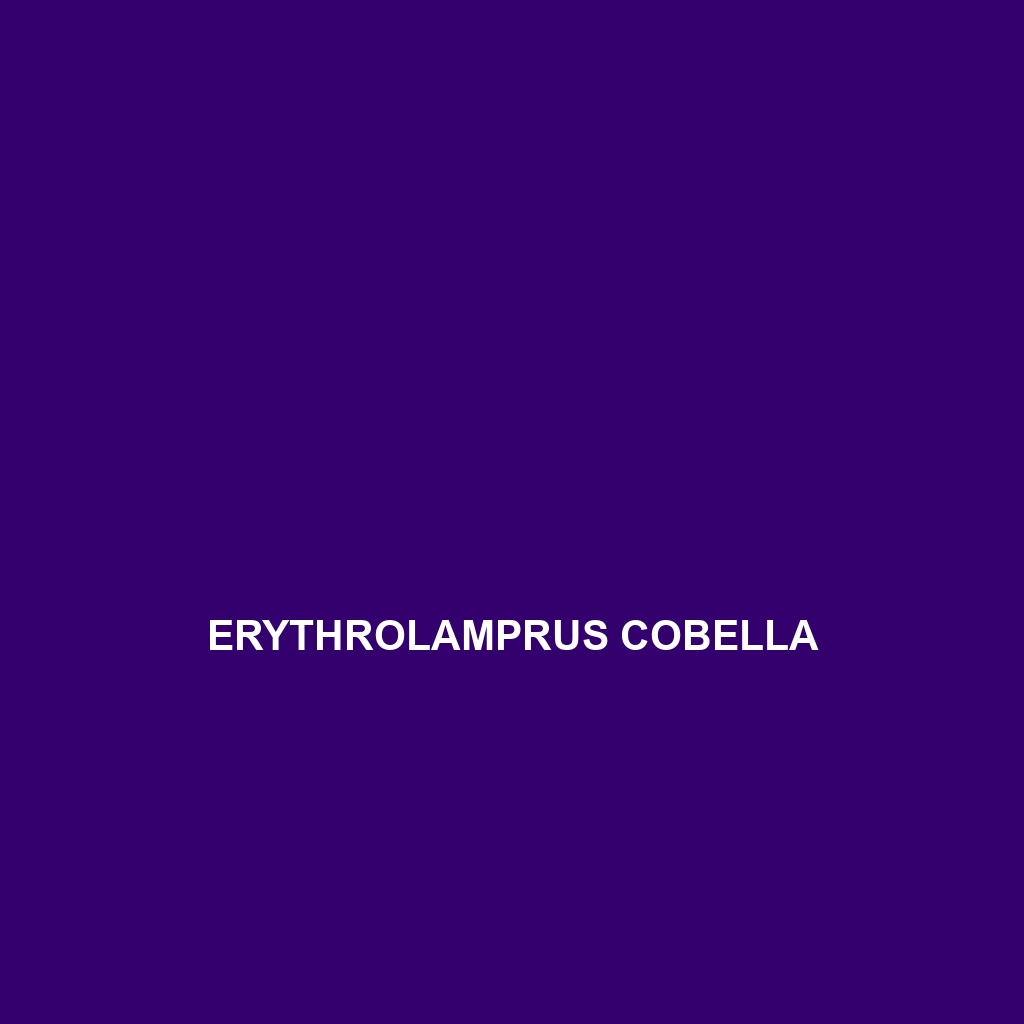Common Name
Erythrolamprus cobella
Scientific Name
Erythrolamprus cobella
Habitat
Erythrolamprus cobella, commonly known as the Brazilian Coral Snake, primarily inhabits a range of environments from temperate forests to tropical rainforests across South America. This species is predominantly found in regions of Brazil, Colombia, and Venezuela, favoring areas with an abundance of underbrush and ground cover for camouflage and hunting. The climate in these habitats varies from humid and moist to drier seasons and supports a rich biodiversity, making these environments ideal for the snake’s life cycle. Other typical habitats include savannas and shrubby areas near rivers, where the snake can thrive in both terrestrial and semi-aquatic environments. The ecological conditions found here are crucial for providing both shelter and food sources.
Physical Characteristics
Erythrolamprus cobella is characterized by its striking coloration—typically featuring a vibrant pattern of red, yellow, and black bands, which serve as a warning mechanism against potential predators. This coloration can vary among individuals, with some showing more muted tones depending on their habitat. The average adult reaches a length of about 80 to 120 cm (31 to 47 inches), though larger specimens have been recorded. The head is slightly wider than the neck, and the body is elongated and slender, facilitating quick movements through the dense underbrush. Its distinctive coloration and size make Erythrolamprus cobella easily identifiable among other species.
Behavior
Erythrolamprus cobella exhibits fascinating behaviors that capture the interest of herpetologists and wildlife enthusiasts. This species is primarily nocturnal, preferring to be active during the cooler hours of the night. During daytime, they often retreat to burrows or dense vegetation to avoid predators and conserve moisture. Socially, these snakes can be solitary, although they may come together during mating season. Their mating rituals involve intricate displays and aggressive courtship behaviors where males may engage in combat to win the favor of a female. These unique habits enhance their survival and reproduction success in the wild.
Diet
The dietary habits of Erythrolamprus cobella classify it as a carnivore, primarily preying on smaller reptiles, amphibians, and occasionally small mammals. Their feeding patterns showcase a precise hunting strategy; they rely on their quick reflexes and striking speed to capture prey. This snake employs a venomous bite, delivering neurotoxic venom that immobilizes its prey before consumption. As a result, they play a vital role in controlling the population of their prey species, contributing to the overall ecological balance of their habitat.
Reproduction
The reproductive cycle of Erythrolamprus cobella typically occurs once a year, during the warmer months when prey is abundant. Mating generally takes place in the spring, with a gestation period lasting around 60 to 70 days. Females give birth to live young, usually producing a clutch of 5 to 15 offspring. The young snakes are born with a similar coloration to adults, allowing for their immediate adaptation into the environment. Post-birth, the female shows minimal to no parental care, as the newborns are independent and must fend for themselves from the moment of birth.
Conservation Status
As of current assessments, Erythrolamprus cobella is listed as Least Concern by the IUCN Red List. This status indicates that, on a global scale, the population is stable and not facing immediate threats. However, habitat destruction due to agriculture and urbanization presents ongoing challenges to their natural habitats. Conservation efforts are crucial in maintaining the biodiversity of these regions, and thus it is important to promote awareness and protective measures for these remarkable snakes.
Interesting Facts
One fascinating aspect of Erythrolamprus cobella is its mimicry of other venomous snakes—an adaptation that serves as a defense mechanism against predators. Despite being less dangerous than other venomous species, its coloration serves as an effective warning signal. Additionally, the Brazilian Coral Snake is known for its ability to remain motionless for extended periods, which helps them avoid detection while hunting or resting. Such behaviors contribute to this species’ survival and attraction within their ecosystem.
Role in Ecosystem
Erythrolamprus cobella plays a vital ecological role in its habitat as both a predator and prey. By controlling the populations of its prey species, it helps maintain a balanced ecosystem. Furthermore, as a part of the food web, they are preyed upon by larger predators, thereby contributing to the energy transfer across the ecological hierarchy. Their presence indicates a healthy environment, making them an important species for monitoring ecosystem health. The interactions of this snake with other species underscore its essential role in maintaining biodiversity.
